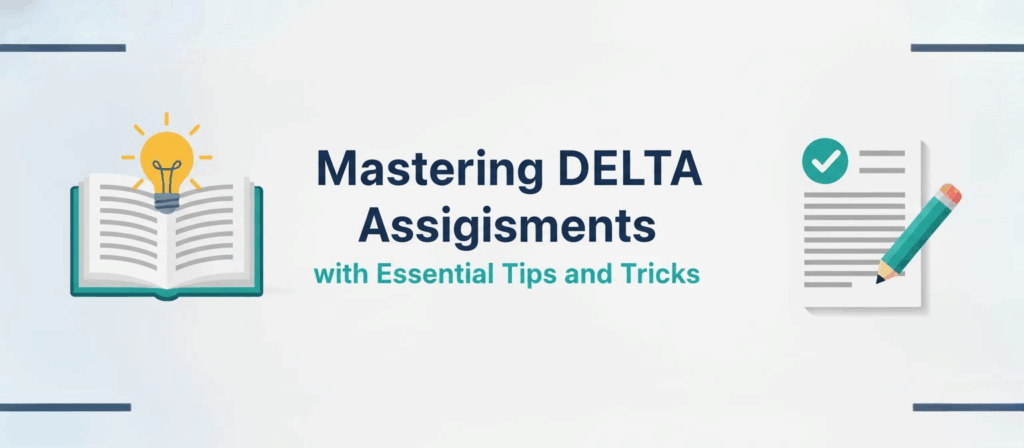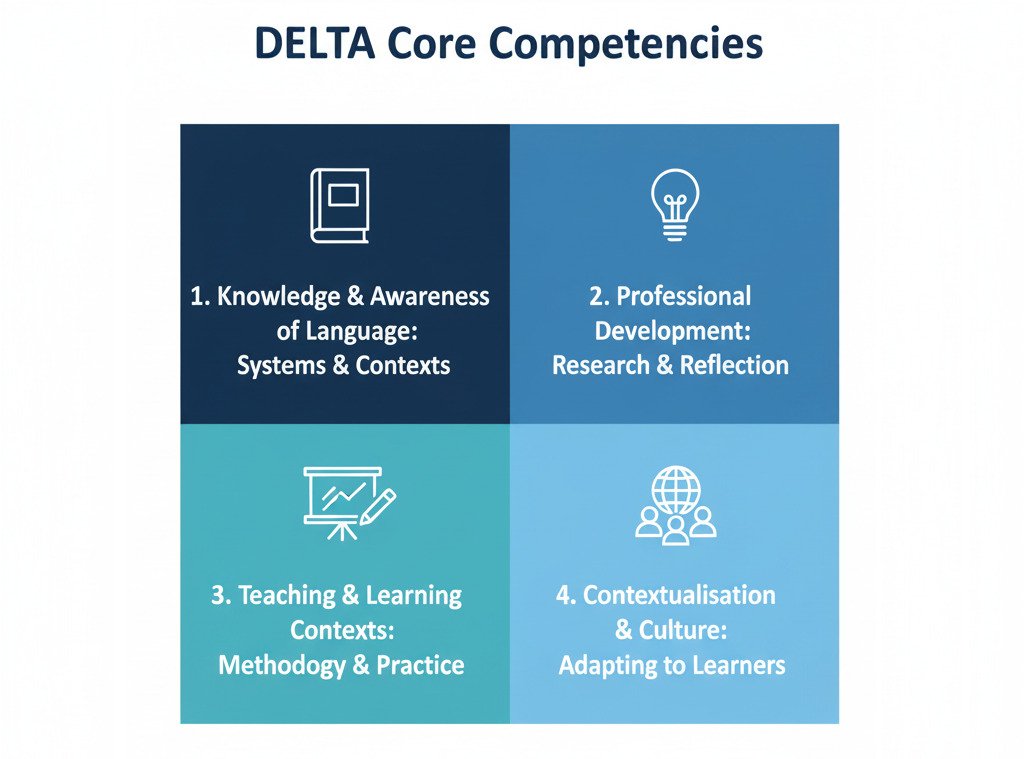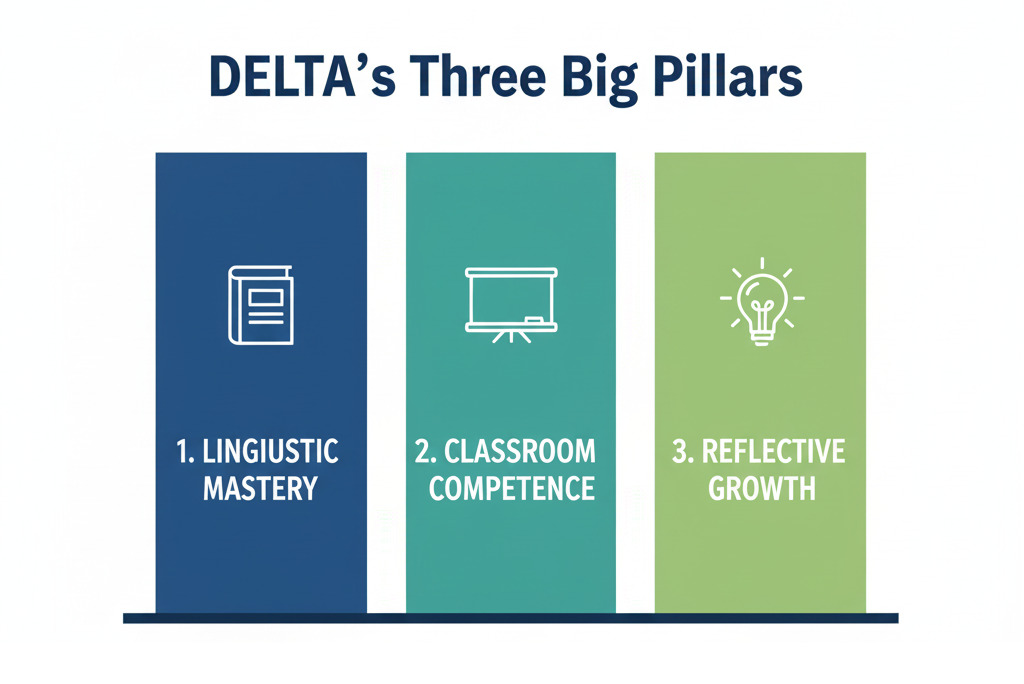DELTA Assignment Mastery: Essential Tips for Excellence

Starting DELTA can feel like stepping into a storm you thought was a breeze. You’re juggling theory, classroom practice, and those tight, unforgiving criteria that demand precision. It’s not casual work. It’s layered, technical, and-oddly enough-deeply personal. For teachers planning to work abroad or online, clarity and methodical discipline matter more than enthusiasm alone. You’ll need both a map and a mindset: clear expectations, grounded reflection, and a systematic approach that shows you can think, teach, and justify.
This guide breaks the entire process into manageable chunks. You’ll find real tactics, ways to manage time without losing your mind, and practical writing strategies that help you meet DELTA standards without sounding robotic. Follow the rubrics, revise deliberately, and your writing will show not only skill but maturity-the kind that turns a teacher into a professional practitioner.
A sound plan is worth its weight in hours. Treat each module like part of one cohesive story, not as a pile of unrelated checklists. Map tasks to criteria. Schedule time for feedback, drafting, and reflection. Build habits of detailed analysis and grounded reasoning. DELTA work, when done right, becomes a snapshot of what you know about language, how you teach it, and how you grow through it.
Remember-DELTA is as much about how you work as what you produce. Careful planning, structured writing, and iterative revision transform a demanding process into a test of consistency and professional growth. So, let’s get straight to the practices that actually work across all modules.
Effective DELTA Assignment Strategies That Actually Deliver
Three habits sit at the core of every strong DELTA submission: thoughtful planning, evidence-driven argument, and repeated refinement. Start by breaking down the task against the exact criteria you’re supposed to meet. Note your key claims-what you’ll prove about your grasp of language systems, how you design teaching, and how you reflect on both.
A solid plan cuts through confusion. It keeps your focus on results instead of sliding into vague classroom anecdotes. Decide early where you’ll show theory, where you’ll integrate classroom data, and where you’ll reflect on student progress. Remember: DELTA isn’t about describing what you did-it’s about defending why you did it.
Then, build a clean, coherent argument. Let theory and practice weave together, not sit in separate boxes. Use your own data-learner notes, performance records, observed patterns. And don’t shy away from mentioning flaws or counterpoints; then explain how you’d handle them differently next time. This kind of intellectual honesty demonstrates both depth and professionalism.
Finally, never underestimate revision. Draft once, get feedback, revise, check again. Keep a short revision log-it’s boring, yes, but gold later. Record what changed, why, and which rubric point it improves. That’s how you turn raw writing into something polished and credible.
Strategic Planning and Evidence
Strategic planning is your shield against messy, unfocused writing. Dissect the task. Pin down the language element, the teaching principle, and the reflection piece. Write out what claim you’ll make in each, what evidence you’ll bring in, and what tone fits-formal, concise, or slightly narrative. This alignment forces coherence and prevents you from drifting into fluffy description without real evaluation.
Evidence-based reasoning is the muscle behind good DELTA work. You’re not just recounting your class-you’re analyzing it. When you talk about a teaching decision, explain it through the lens of linguistic theory and learner needs. Bring in actual classroom notes or student feedback if you have it. Show how your classroom experience reshaped your understanding of theory, and vice versa. That mutual loop is what DELTA assessors want to see: thinking teachers, not copy-pasters.
Sample Six-Week DELTA Milestone Plan
| Week | Task | Focus | Output | Feedback | Notes |
| 1 | Self-diagnostic | Language awareness | Reflective note | Tutor feedback | Establish your baseline |
| 2 | Module 1 draft | Language in use | Task 1 draft | Peer review | Check match with rubric |
| 3 | Research-led plan | Teaching rationale | Annotated outline | Tutor feedback | Link theory with decisions |
| 4 | Teaching evidence | Practical application | Observation notes | Supervisor input | Tie data to outcomes |
| 5 | Revision round | Structure and clarity | Refined draft | Peer review | Strengthen argument logic |
| 6 | Final edit | Formatting and citations | Final version | Internal review | Confirm full alignment |
Sticking to the Schedule
Stick to the schedule. Protect two sessions weekly for pure writing and another for editing or referencing. Run a rubric check before submitting anything: is your reasoning clear, your evidence credible, your tone academic but readable? If yes, then your submission won’t just describe-it will demonstrate professional reasoning.
Writing DELTA Tasks Without Losing Flow
DELTA writing is a balancing act: precision, discipline, and audience awareness. Break the prompt down first. Identify what you’re proving, what evidence proves it, and how each section will flow. Write for clarity, not decoration. State your argument early, develop it methodically, close cleanly. Signposting phrases-used sparingly-keep the reader anchored.
Language accuracy is not optional. DELTA demands academic tone without jargon bloat. Use technical terms when needed-diagnostic assessment, learner autonomy, form-focused instruction-but always with precision. Every sentence should serve your case. If it doesn’t, trim it.
Structured Approaches to Working With DELTA Criteria
You can’t hit the target if you don’t know its shape. Start by mapping each DELTA criterion to the sections of your writing. When you tackle “knowledge of language in use,” be specific: what linguistic feature are you analyzing? What strategy are you defending? What evidence will you show? That transparency makes your reasoning traceable and, crucially, assessable.
Create a rubric-alignment grid. Criteria on one side, essay parts on the other. Note exactly where each one is addressed. This method helps you balance range with depth-no criterion neglected, none stretched too thin. It’s like building an audit trail your tutor can follow at a glance.
Understanding the criteria means recognizing DELTA’s three big pillars: linguistic mastery, classroom competence, and reflective growth. Frame every piece of writing through those lenses. Then, in each section, use clear references to show which criterion you’re addressing, what supports it, and how it connects to learner outcomes.
Staying on Schedule: Submitting DELTA Work Without Chaos
Deadlines don’t care how inspired you feel. Build a timeline early, one that includes research, drafting, revision, and unexpected interruptions. A realistic timetable keeps you calm and productive.
Discipline in scheduling is matched by discipline in writing. Set recurring writing slots-small, regular blocks beat late-night marathons. Keep track of drafts using version control; label everything clearly. Feedback should enter your workflow fast: read it, act on it, record what changed.
Editing is where quality hides. Check grammar, tone, and citation accuracy. Clean formatting-consistent headings, readable fonts, proper referencing-signals professionalism before a single argument lands.
When feedback arrives, sort it: essential, optional, or carry-forward. Update a short revision log with each change and rationale. This record isn’t bureaucratic-it’s evidence of your professional growth, something DELTA values highly.
Turning Feedback Into Real Progress
Feedback is fuel if you know how to burn it properly. Don’t just collect comments-convert them into actions. Ask for guidance tied to specific criteria, not vague opinions. The clearer your questions, the sharper your feedback.
Maintain a two-pass revision habit. First pass: argument and structure. Second: language precision and tone. This separation keeps your focus tight. A well-kept revision log records when feedback was received, how you used it, and what improved as a result. Over time, it becomes a mirror of your development.
Purposeful revision should produce visible results-tighter logic, better evidence linkage, clearer phrasing. Reflect briefly on what worked and what didn’t after each round. That’s the DELTA mindset: reflective, adaptive, grounded.
Building Your DELTA Resource Toolkit
No one completes DELTA without the right tools. Begin with the official Cambridge and British Council materials, then expand with peer-reviewed research and teacher development literature. Keep notes of relevant theories, useful models, and practical frameworks. Cross-reference them by topic or criterion to save time later.
Practice is equally important. Design mock tasks-plan a lesson, write a short rationale, evaluate outcomes. Then write reflective commentaries linking theory, context, and learner data. Time yourself occasionally. The aim isn’t speed-it’s fluency under structure.
Combine those tasks with feedback loops. After each mock submission, gather feedback, update your log, and refine your study plan. Over time, this rhythm sharpens both your content mastery and your writing discipline.
Practical Insights and Immediate Steps
- Build a personal DELTA roadmap linking modules to feedback cycles
- Collect classroom evidence early and organize it by theme
- Schedule timed writing practice at least twice a month
- Base every claim on verifiable data or theory
- Stick with trusted institutional sources; skip random blogs
Key Takeaways
- Align every task with its exact assessment criterion
- Anchor every argument in both theory and evidence
- Revise with purpose; track every meaningful change
- Maintain your resource base and practice consistently
- Treat your writing as professional communication, not a diary entry
What Comes Next for DELTA Candidates
- Read the official Cambridge DELTA handbook carefully.
- Build a structured six-week work calendar per module.
- Keep a feedback and revision log from day one.
- Engage with real ELT research-UNESCO, OECD, major journals.
- Practise regularly, reflect honestly, and keep iterating.
What is the DELTA exactly, and how is it structured?
DELTA (Diploma in English Language Teaching to Adults) is a professional qualification by Cambridge Assessment English. It comprises three modules spanning understanding language, developing professional practice, and extending knowledge through research and reflective practice. Each module requires demonstration of how theory informs teaching and how reflective practice informs future planning. (Cambridge Assessment English; British Council)
How long does DELTA typically take, and how should I plan my study time?
Times vary, but candidates commonly allocate several months to a year to complete all modules, with multiple drafts and feedback cycles built in. Effective planning involves breaking tasks into weekly milestones, building in revision buffers, and maintaining a steady writing routine. (British Council guidance; UNESCO resources on professional development)
What should I prioritise in DELTA writing tasks to maximise success?
Prioritise alignment with assessment criteria, clarity of argument, and robust justification of decisions. Use specific classroom evidence and researcher-informed rationale, signpost your reasoning clearly, and ensure precise use of language and terminology. Regularly consult official rubrics and seek targeted feedback on both content and language. (Cambridge DELTA; British Council)
How can I use feedback most effectively?
Treat feedback as a learning tool. Create a revision log, map feedback to specific criteria, and plan concrete changes. Use a two-pass revision system—first for content and argument, then for language and presentation. This approach demonstrates reflective practice and tangible professional growth. (University writing centres; DELTA guidance)
Are there practical tools that help with DELTA submissions?
Yes. Maintain a structured drafting workflow, use reference management software for citations, and employ checklists aligned with the DELTA rubrics. A tidy, well-formatted submission reduces cognitive load for readers and helps ensure your ideas are presented with maximum clarity. (Cambridge resources; university writing centres)







